by Danae Theodoridou
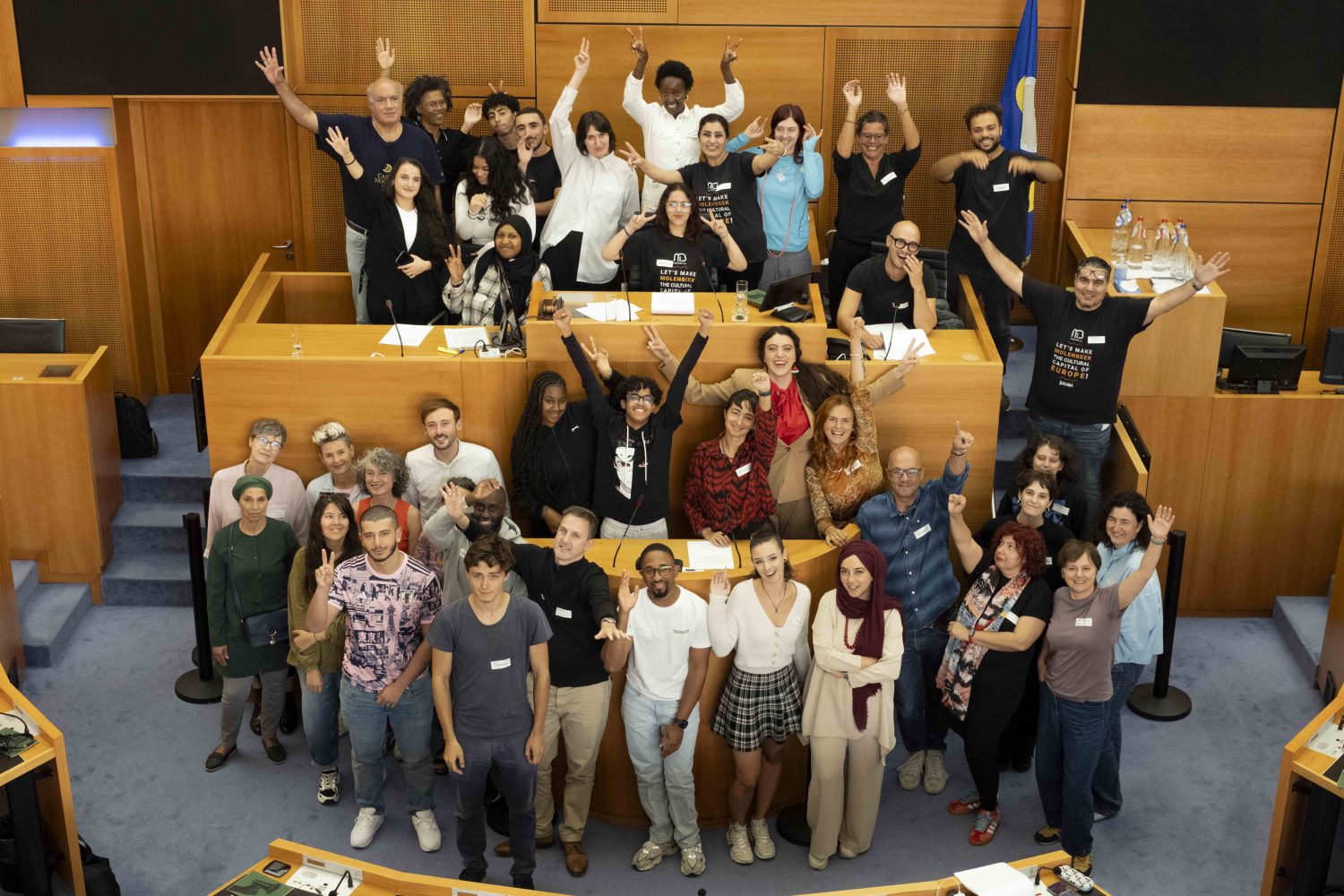
Since 2019, my artistic work focuses on The Practice of Democracy. Under this umbrella title, I create different participatory performances, each one of which focuses on a specific practice of democracy. Until now, I have worked on the practices of public speaking, protesting, assembling, as well as on the practice of conflict. Aim of this work is to explore the way performance can contribute to the empowerment of citizen’s participation in politics and the emergence of alternative modes of social coexistence other than the dominant capitalist ones. In order to do that, the project proposes an embodied, sensorial, material approach to democracy, which is usually discussed solely as an intellectual, rational process. What is a democratic community? How do we enter it physically and emotionally? How does the materiality of such a community, the material arrangement of the space and the bodies in it, affect its proceedings? What is the role of feelings and senses in democratic processes? Similar questions are worked in the frame of my projects which are highly participatory inviting citizens from different European countries to experiment with these questions in practice.
Here, I would like to focus on one of the projects of The Practice of Democracy, entitled An Attempt to Devise a Democratic Assembly, as this aligns directly with the issue’s interest on the way citizens’ assemblies can reinforce democracy.
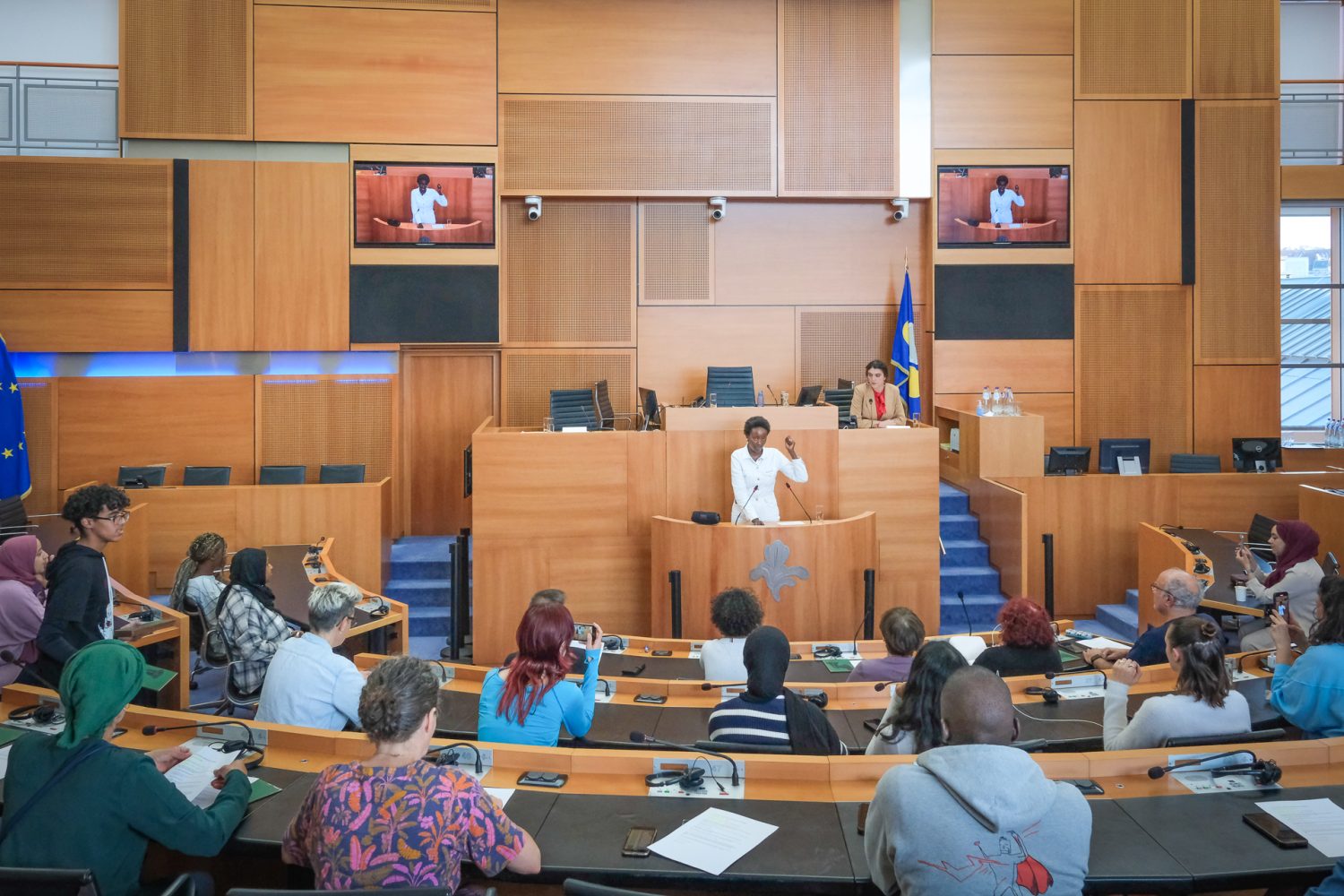
Through the dramaturgical and artistic choices of the specific performance, I will propose five main characteristics that citizens’ assemblies should have in order to be able to empower democratic processes. Before I do that, though, it is important to clarify what ‘democratic’ means in this case given that the term is loaded with different understandings. Democracy in my work is not seen as a normative legal notion defined by constitutions, laws, parliaments, political parties and other institutional structures. Instead, I am more interested in what Castoriadis would call ‘instituting’ democracy, the democracy of those who (should be the ones who) shape institutional democracy, the ‘demos’, namely the people. Reflecting on the current state of democracy in Europe and the Western world, political scientists such as Danai Koltsida and Chantal Mouffe have argued that today we are experiencing a demo-cracy where the first and constituent part of the word, ‘demos’, is more and more absent. This absence manifests through the indifference of citizens towards politics and their significant abstention from elections. It connects largely also to the fact that institutions of parliamentary democracy limit the possibilities for citizens to meet and confront each other, influence political decisions and, hence, exercise their democratic rights. Therefore, at stake at the moment is the way the people are to be (re)constructed and democratic demands are to be articulated.
I would like to argue that the performing arts can play a crucial role in the (re)construction of the people. Performance scholar Rebecca Schneider defines politics as “appearing to others as others appear [to me]”, connecting democracy closely with the appearance and performance (social movement and interaction) of bodies in public space. Social scientist Pierre Ostiguy also stresses the close relation of politics to performance and performativity. Apart from what is said in politics, he argues, what is also crucial is the how this is said as well as issues of physical and emotional closeness expressed through language, accent, sound, body language, gestures and the like. Drawing on such ideas, The Practice of Democracy departs from the premise that we need to start from the body, its public movement, speech, senses, feelings in order to reconnect the people in a ‘we’ able to reinforce democracy. In this sense, the starting point for the project is the fact that democracy constitutes a corporeal practice. It is exactly for this reason that the performing arts, as a discipline that works primarily with the body, can significantly contribute to the aim to reconstruct the people.
In her text “Doing Democracy”, Andrea Phillips discusses participatory art’s ability to produce instances of the micro-political characterized by an improvisatory nature, flexibility, invention and creative responsivity, qualities that are vital for politics, due to two important characteristics that are worryingly absent in today’s institutional forms of democracy: the fact that such work is invented by participants themselves; and the fact that it relates directly to participants local context. In what follows, I analyze the way An Attempt to Devise a Democratic Assembly tried to construct such micro-political space.
The work invites participants to enter rooms of institutional democracy (such as city halls, parliaments etc., namely rooms that are rarely inhabited by citizens) and create their assembly following a script given to them at the beginning of the performance. The script assignes ‘roles’ (speaker, listener, moderator) to participants, instructing them on what to do or say (or even refuse to do or say if they want to). During the performance, participants are also encouraged to change roles. Part of the script is left open, giving space to the members of the assembly to express their own thoughts on democracy and social coexistence. Through this game structure, the assembly is led step by step into a collective reflection on the practice of assembling and our attitude in it, as well as on the central role of the body in politics. There are five characteristics of this work that I propose as constitutive elements of any citizens’ assembly that wishes to reinforce democracy today:
- Citizens enter their institutions of democracy: In order to question dominant operational modes of doing politics, we should disrupt established social habits, creating new political connections. The artistic frame could definitely be used to create such disturbing practices that are not easily recognizable, pulling the city-inhabitants out of a depoliticized context and their comfort zones. Inviting citizens in rooms that are heavily bureaucratic and formal (even in their architectural forms) asking them to collectively speculate about how else an assembly could look in there, created a paradoxical social practice for our Attempt to Devise a Democratic Assembly that was often able to construct more imaginative ways of being together. At the same time, this proposal allowed participants to take a more focused look on their local context and the way political decisions are taken there, and propose unexpected reforms for this context.
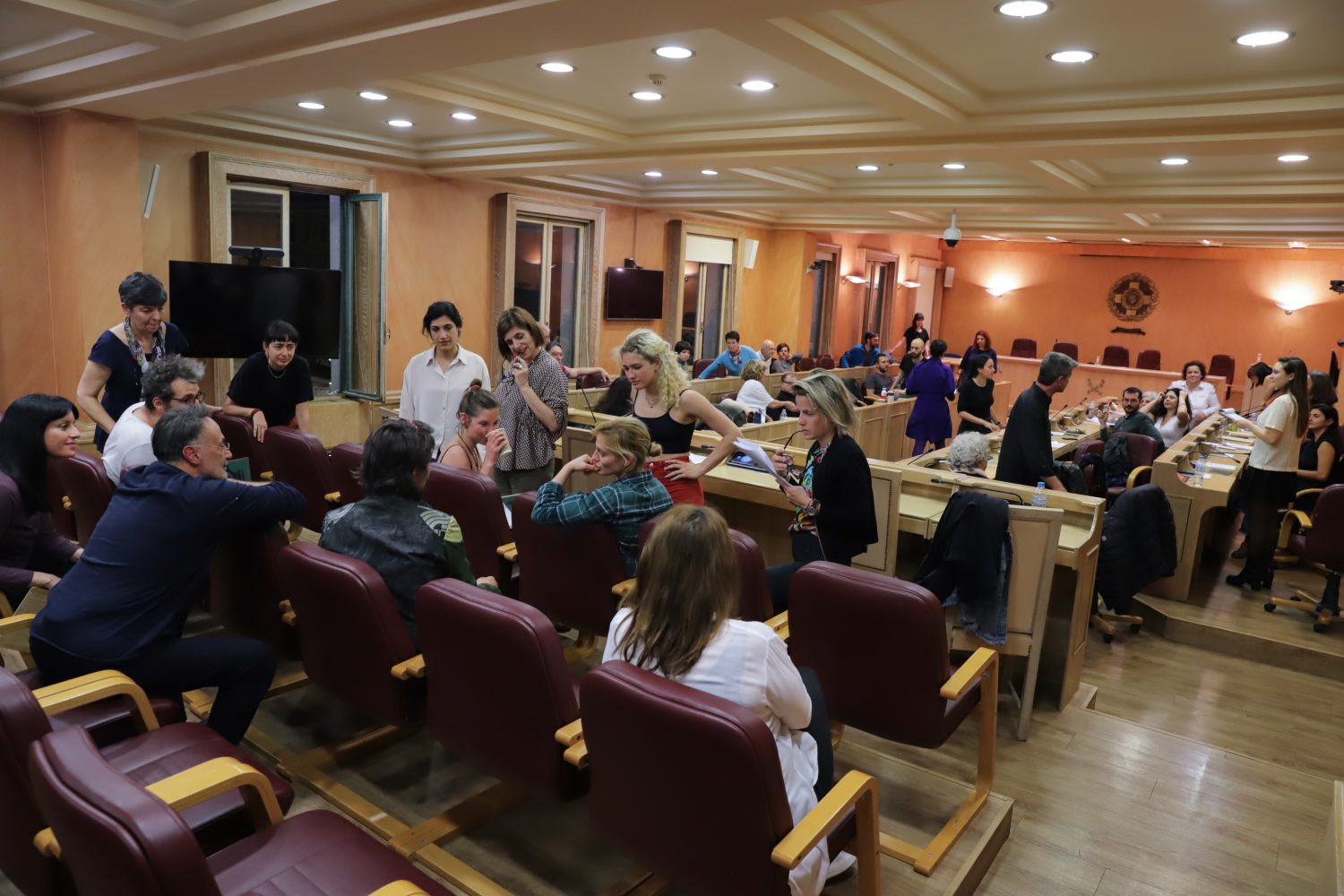
2. Script-based assemblies: An Attempt to Devise a Democratic Assembly is based on a script that gives roles to participants as well as instructions on what to say and do (or refuse to do so, if they want). While setting the concrete frame for their encounter, the script also asks open questions to participants inviting them to share personal stories recognizing the great value of personal experience in democracy, which is often totally neglected in favor of a pseudo-objectivity. Gradually, participants are also encouraged to divert from the script exercising their own agency in space in unpredictable ways. In this sense, the script acts as a half-finished artwork that is completed only when participants interpret it. Balancing between the need to have a clear frame that brings people together, and the sabotage of its own existence that encourages assembly members to act in unexpected ways, the random gathering of An Attempt to Devise a Democratic Assembly has the potential to become a strong political act in the Arendtian sense, constituting, on the one hand, a clear plural initiation and, on the other hand, providing space for its participants to reveal the dynamic of the specific group in unforeseen ways.
3. Role-playing and the creation of new subjectivities: Art historian and critic Jeroen Boomgaard posits that instead of “engaging” an audience that is “being subjected” to it, art should rather provide space for becoming other “subjects” through it. Instead of simply recognising ourselves in an artwork, we should discover the different, the “other”, what was not there before (Boomgaard 2017, 32). In order to achieve this aim, we should look for works we do not identify with, works that do not meet our expectations. Especially in times where social life and politics are determined by extremely self-centred individualism, such goal is utterly significant. Only when we subvert the dominant images we have for ourselves and others, as well as the existing configurations of power, we can start constructing the conditions of emancipation. By putting words in people’s mouths (which they would hear themselves saying, regardless of whether they would agree with them or not) or imposing actions that could fit more or less well to the bodies of the assembly members or the space they are in, An Attempt to Devise a Democratic Assembly asked participants to reimagine themselves and become different for a while, opening thus space for a new (social) relation with themselves and others.
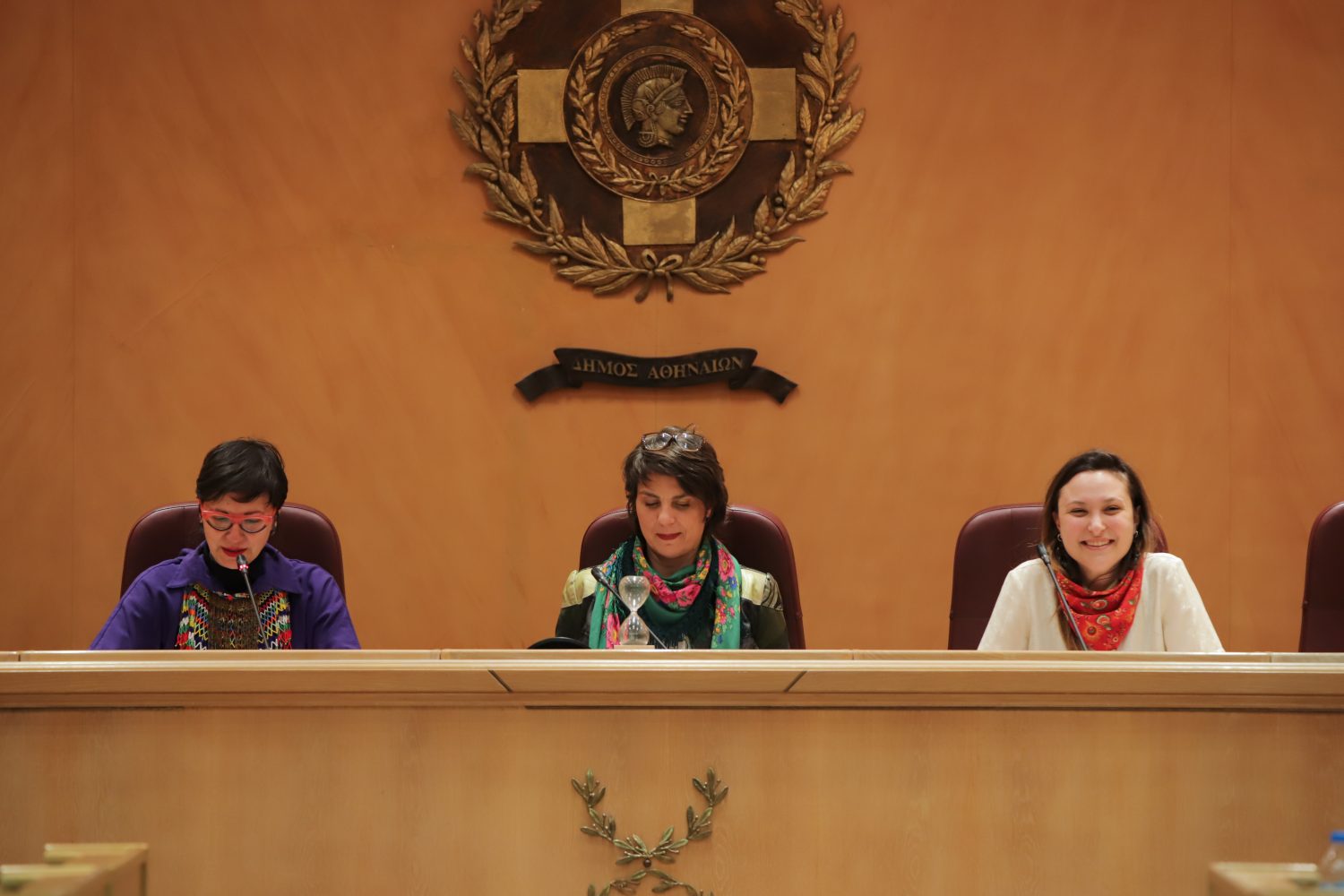
4. Corporeal democracy: As mentioned above, main aim of An Attempt to Devise a Democratic Assembly was to propose, establish and practice an embodied, sensorial, material approach to democracy. This happened in different ways, from explicitly discussing the relation of sexuality to politics and cultivating bodily awareness in relation to other bodies in space, to asking participants to practice dance as a political act. I already referred to Ostiguy’s ideas about the close connection of the body and its performance to politics. I would like here to also stress the importance of Mouffe’s discussion on the emotional dimension of politics -a dimension that is severely neglected in current capitalist frames- as vital for the creation of a robust democracy. For the creation of democratic citizens, Mouffe argues, we do not need more “realistic” arguments regarding the “rationality” of neoliberal politics, but more common feelings, more reasons to identify physically, emotionally with democratic values and each other.
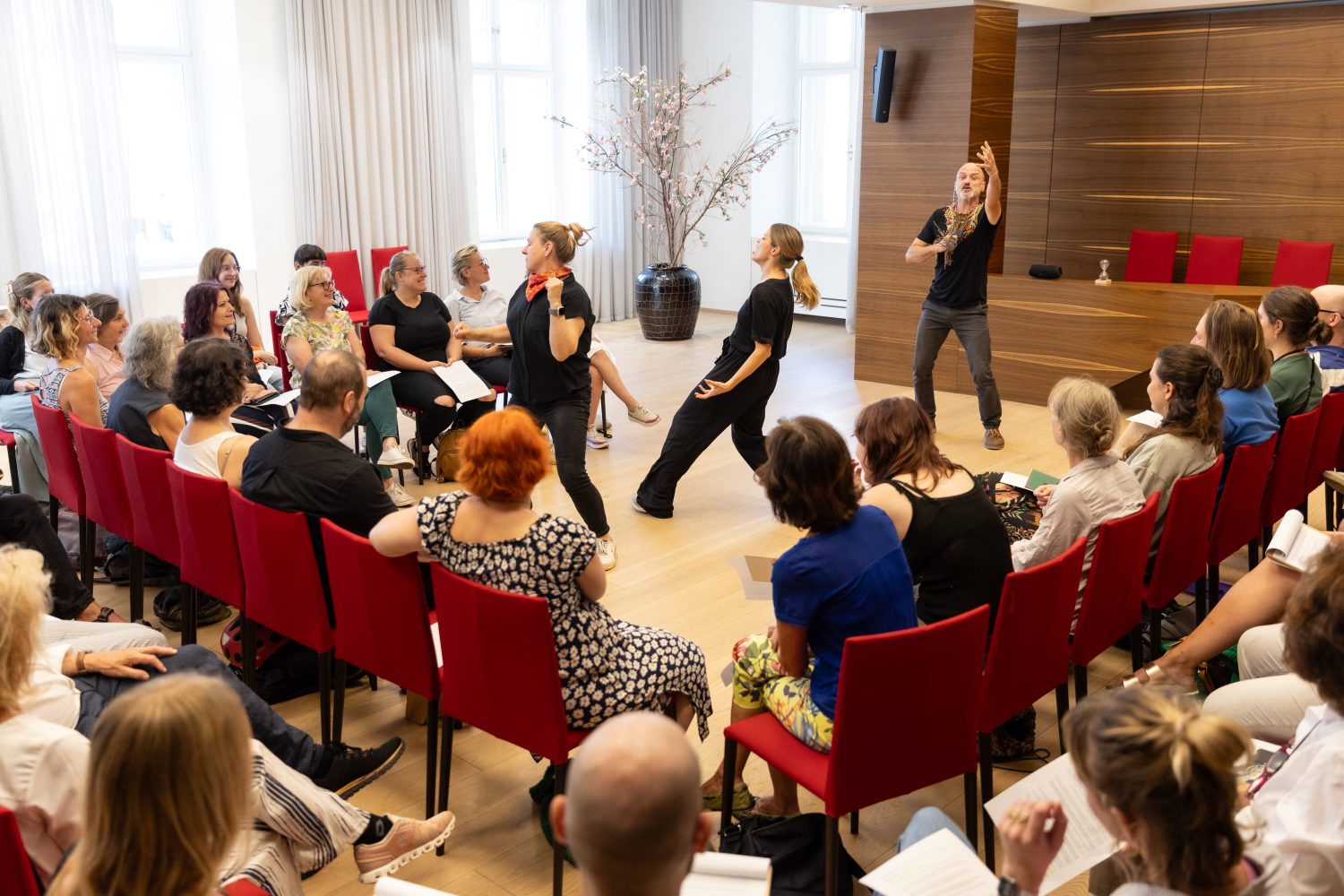
I would like to close this text by arguing that artistic (but not only) frames that experiment with ways for coming together though the above mentioned characteristics, have the potential to construct powerful acts of ‘publicing’ (Theodoridou 2022) and produce an empowering public space. By approaching the ‘public’ as a verb, namely an action -and moreover as a continuous action as the -ing ending denotes- and (re)training ourselves in this action as a bodily practice in the way athletes do, democracy can be reinforced in radical ways. Maybe, at the end of the day, what democracy needs today is the renewal of its warm-up practices; a good knowledge and handling of specific techniques; extreme physical effort; strong motivation, consistency and ethics; resilience. And maybe if we approach democracy as a sport and practice it daily, we can gradually learn how to become good at it.
Danae Theodoridou is a performance maker and researcher. She completed her practice-led PhD in Roehampton University in London (2013). Her work focuses on social imaginaries, the practice of democracy and the way that art contributes to the emergence of socio-political alternatives. She teaches in the MA Performing Public Space (Fontys Academy of the Arts), conducts research in the Royal Conservatoire Antwerp, curates practice-led research projects, and presents and publishes her work internationally. She is co-author of The Practice of Dramaturgy: Working on Actions in Performance (Valiz, 2017) and the author of Publicing – Practising Democracy Through Performance (Nissos, 2022).